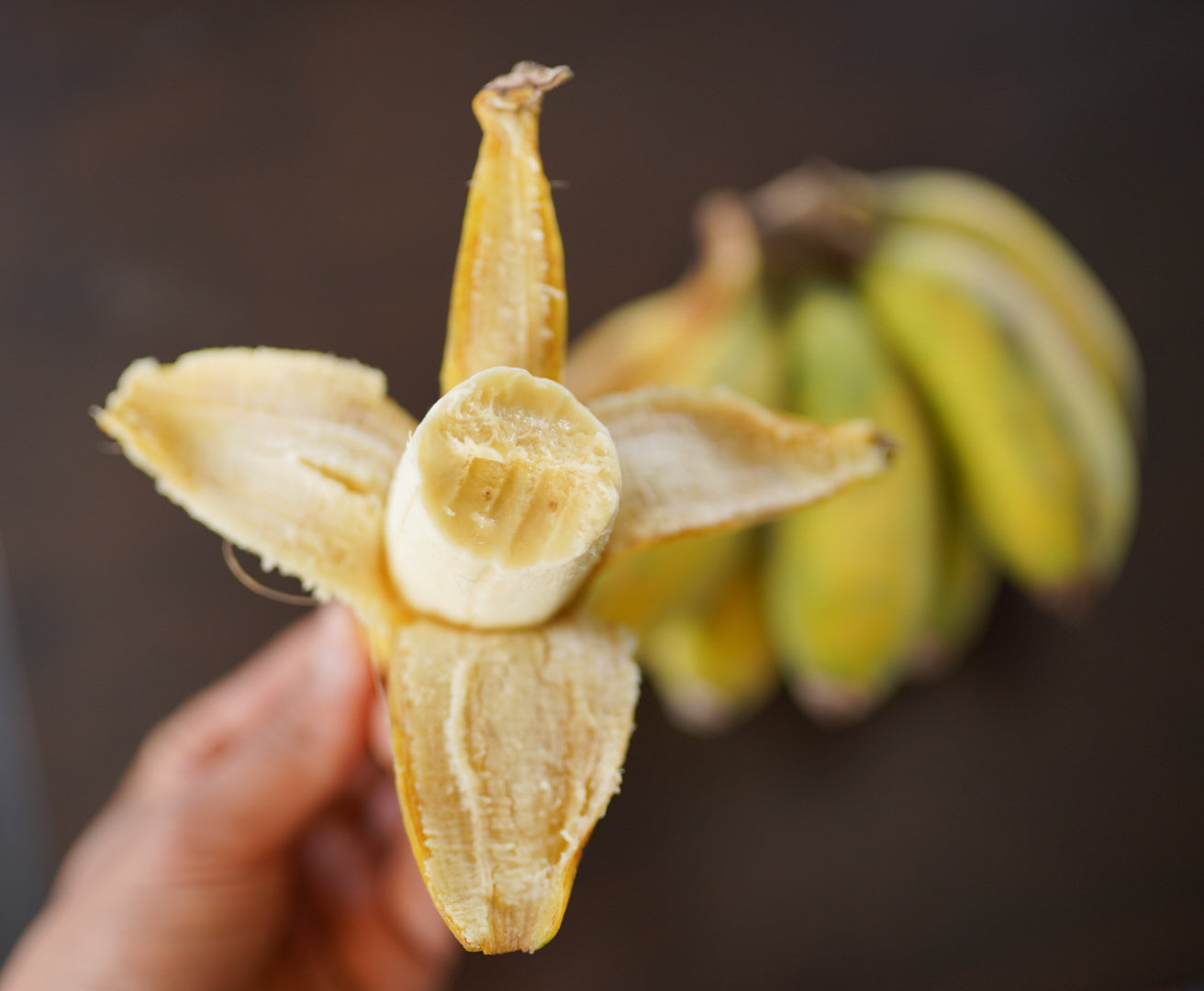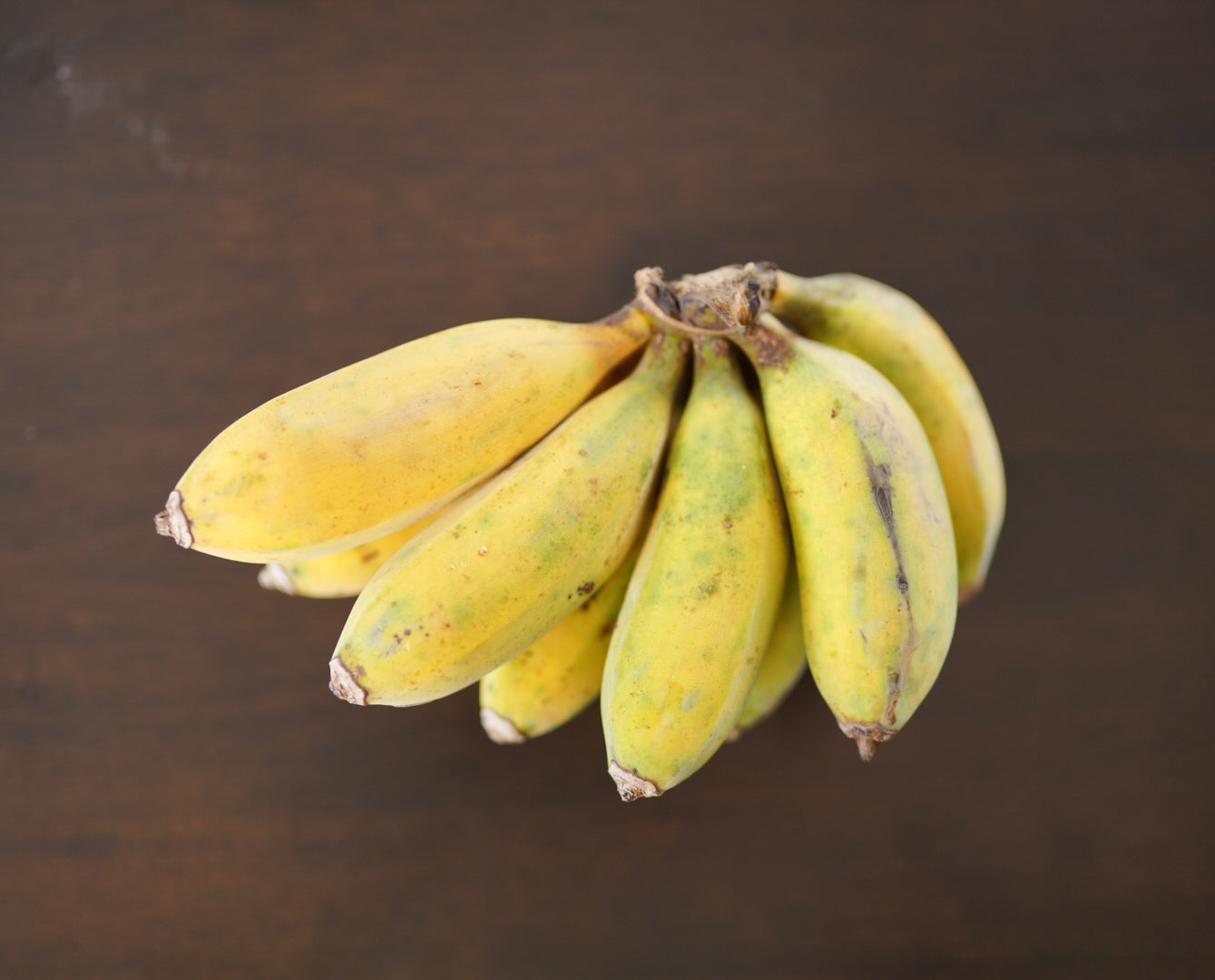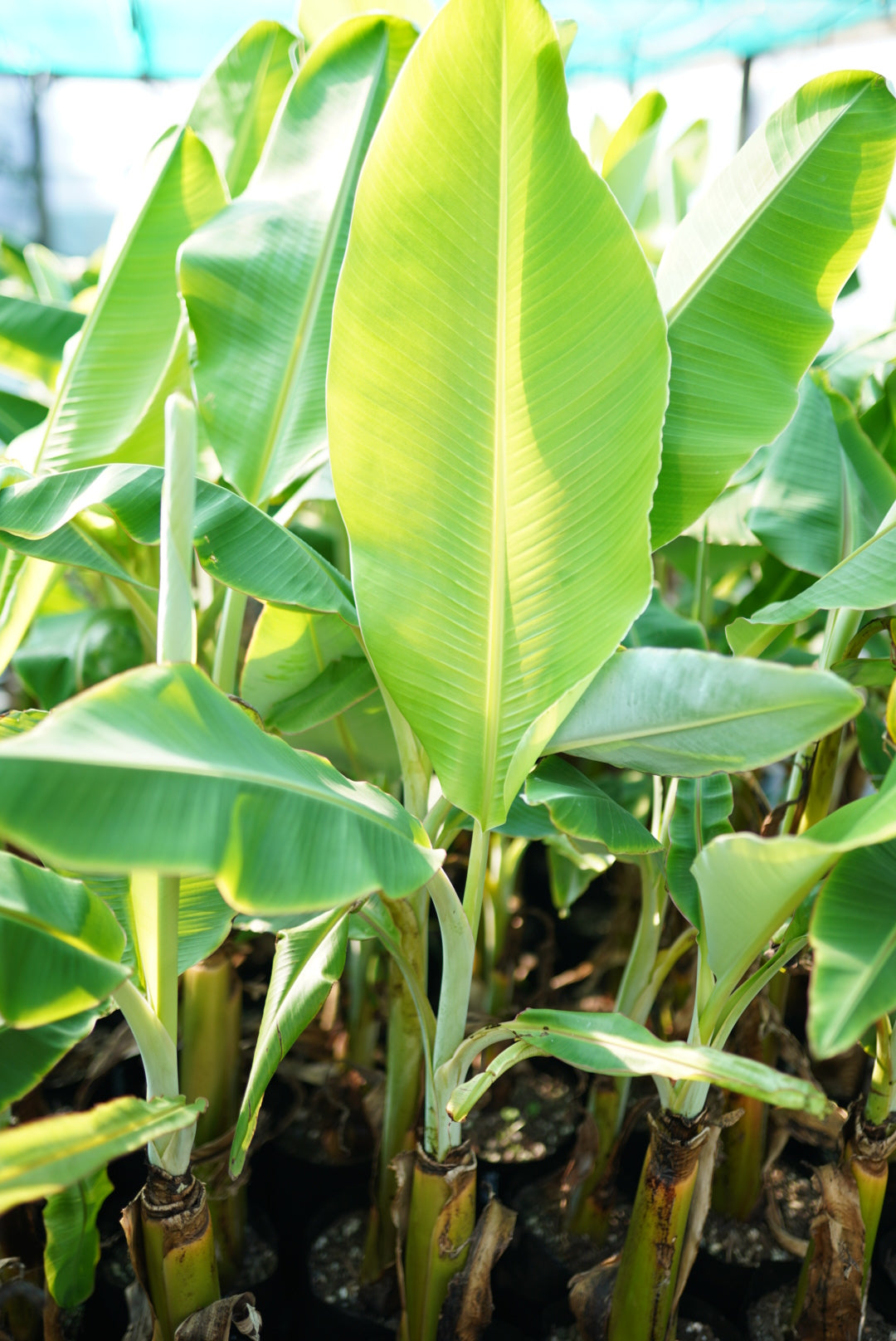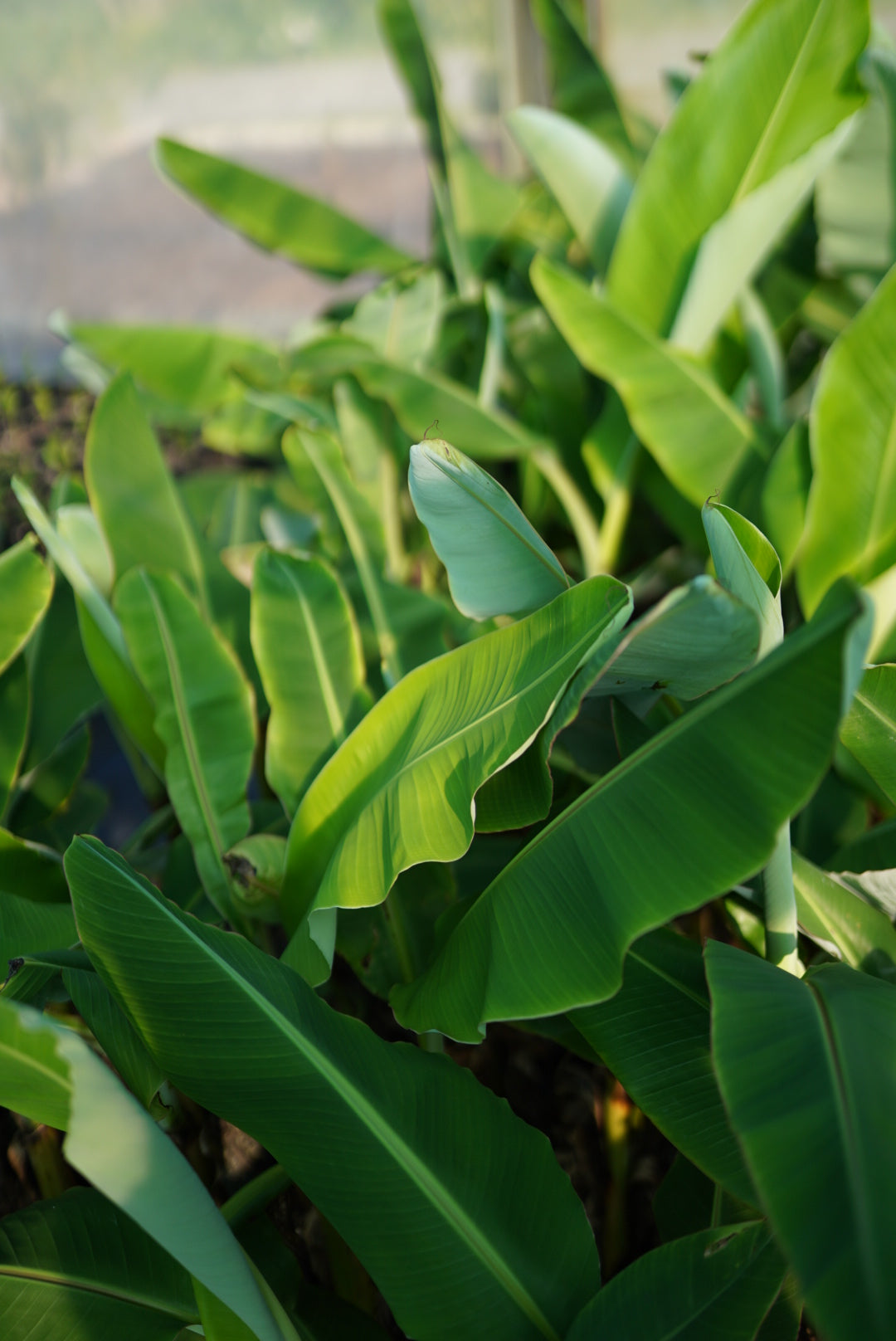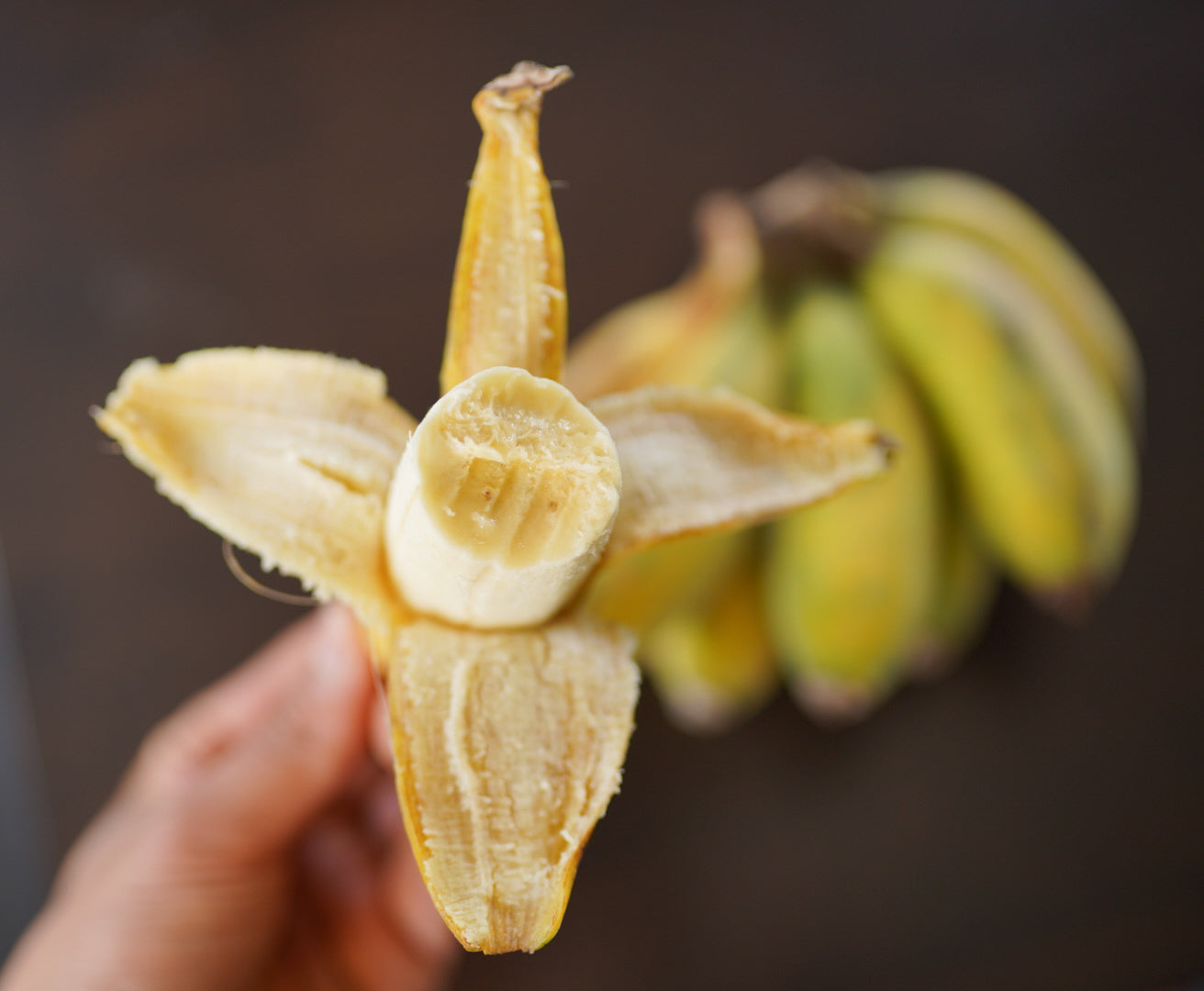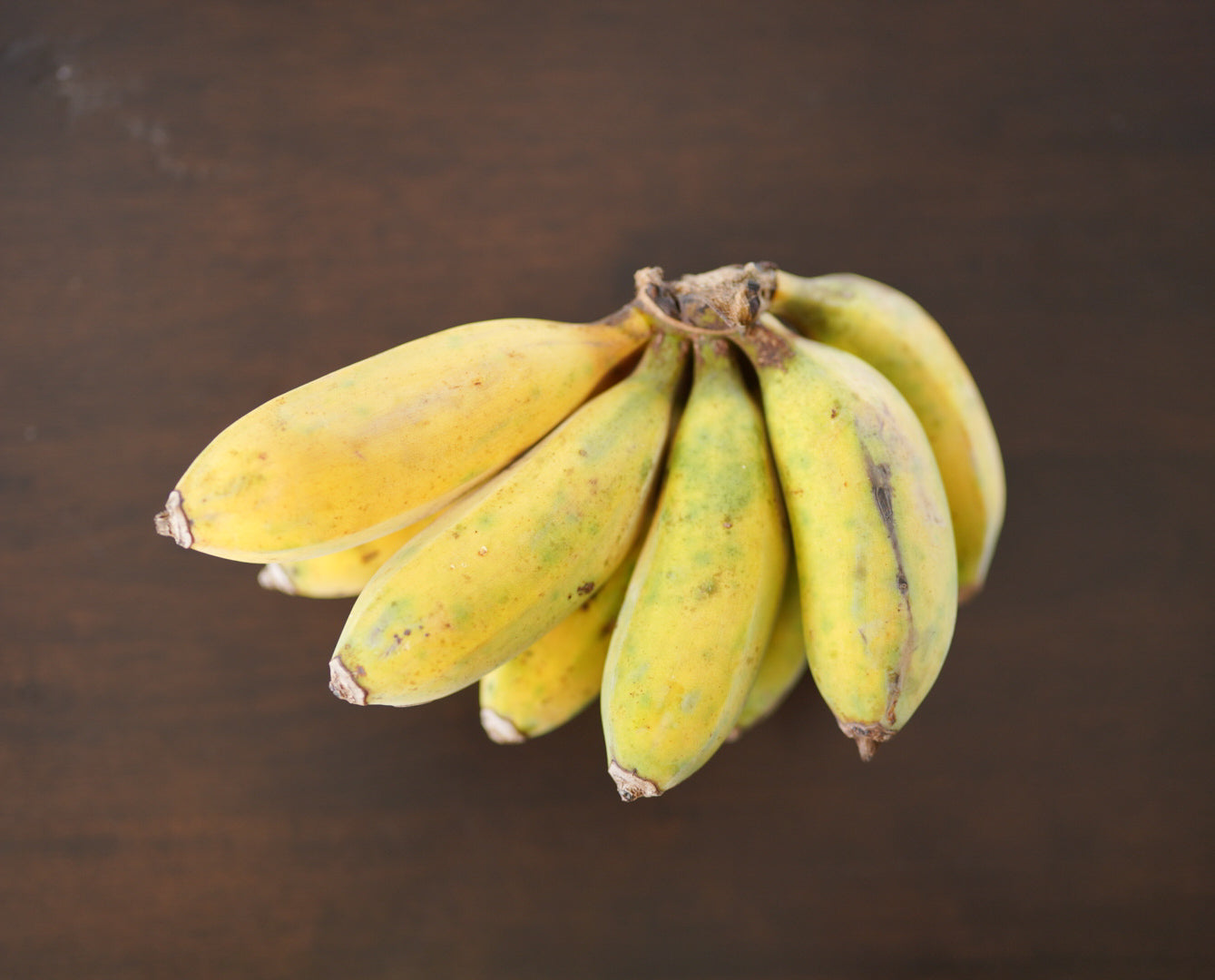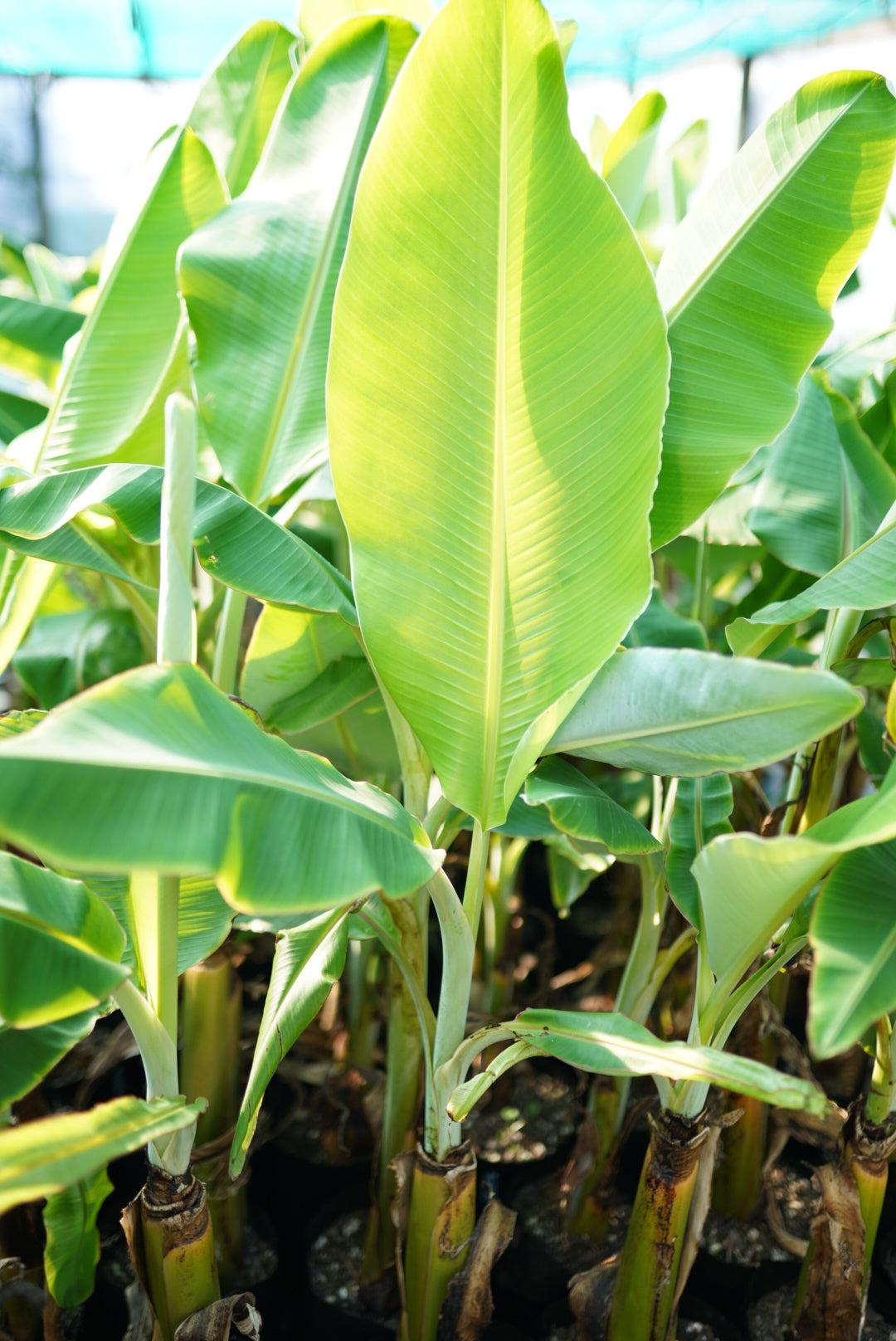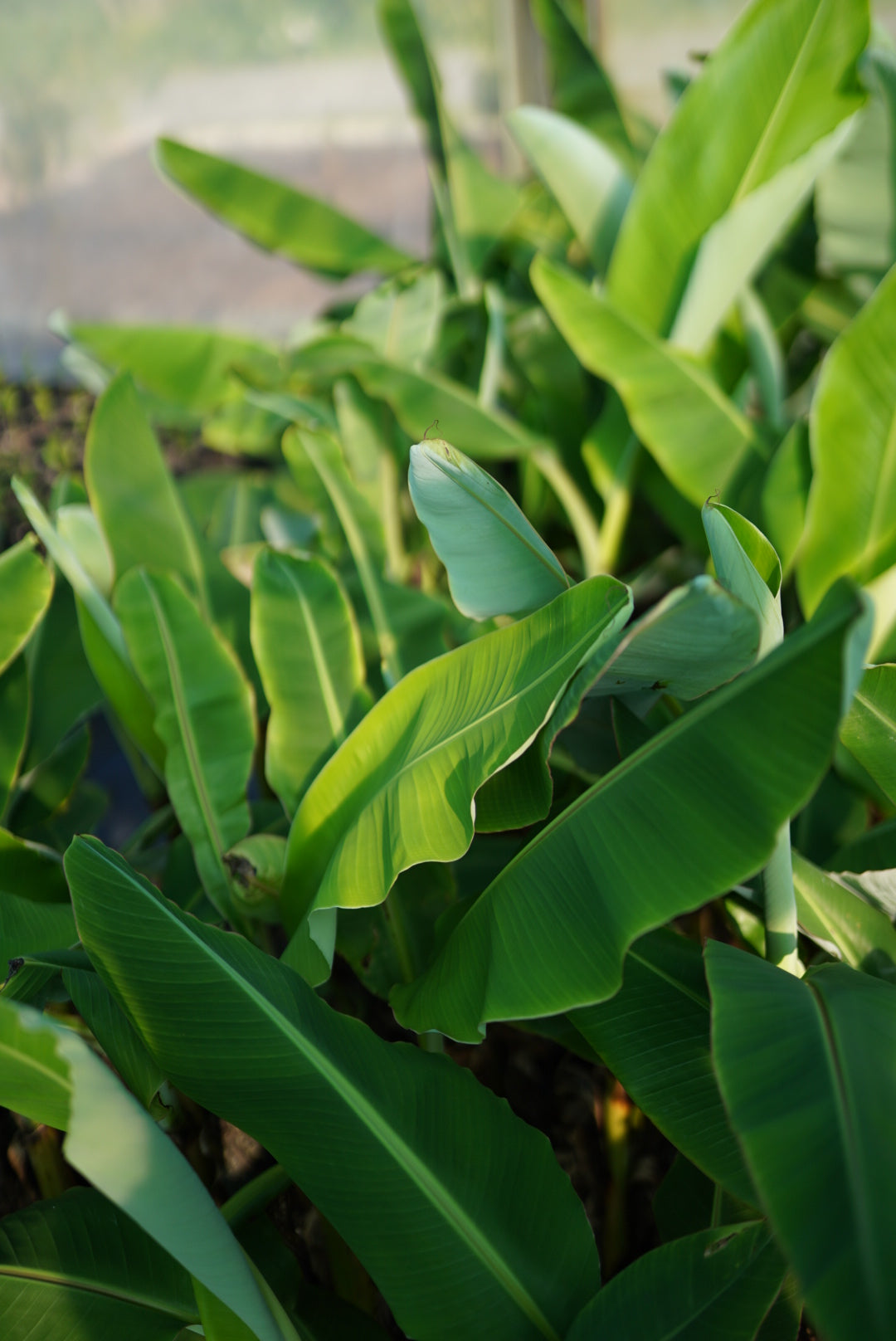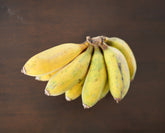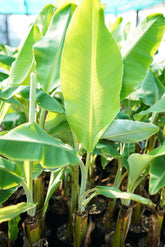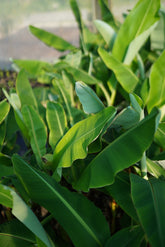Banana - Misi Luki
- Regular price
-
$49.00 - Regular price
-
- Sale price
-
$49.00
Couldn't load pickup availability
Misi Luki, originally from Samoa, is the most commonly cultivated banana variety in New Zealand. These lady finger type plants are resilient and well-suited to New Zealand's growing conditions, with numerous Misi Luki plantations in Northland and the Bay of Plenty. These plants can grow relatively tall, reaching heights of 3.0 to 4.0 meters in warm or northern parts of the country.
Fruit
The fruit of Misi Luki is exceptionally sweet with a creamy texture, making it one of the most delicious banana varieties available. In optimal conditions, bunches of Misi Luki bananas can contain up to 200 fruits.
Position
To cultivate Misi Luki bananas successfully, it's important to plant them in a sheltered, sunny location. Additionally, these bananas require regular watering, especially during hot spells.
Banana Plant Care Tips
-
Sunlight: Banana plants thrive in full sun, so it's best to plant them in an area that receives at least 6-8 hours of direct sunlight per day.
-
Soil: Banana plants prefer well-drained soil that is rich in organic matter. A pH range of 5.5-7.0 is ideal for optimal growth.
-
Watering: Banana plants require regular watering, especially during the growing season. Keep the soil moist, but not waterlogged. Overwatering can cause the roots to rot.
-
Fertilizer: Banana plants are heavy feeders and require regular fertilization. Apply a balanced fertilizer every 4-6 weeks during the growing season.
-
Mulching: Mulch around the base of the plant to help retain moisture and suppress weeds.
-
Pruning: Remove any dead or damaged leaves and suckers (smaller offshoots that grow from the base of the plant) regularly. This will help promote healthy growth and prevent disease.
-
Pests and diseases: Banana plants are susceptible to a variety of pests and diseases, so it's important to monitor the plant regularly for any signs of infestation or disease. Common pests include aphids, spider mites, and mealybugs, while common diseases include Panama disease and Sigatoka leaf spot.
-
Harvesting: Bananas are typically harvested when they are fully ripe and the skin is yellow. Cut the bunch off the plant with a sharp knife and allow the fruit to ripen further at room temperature.
